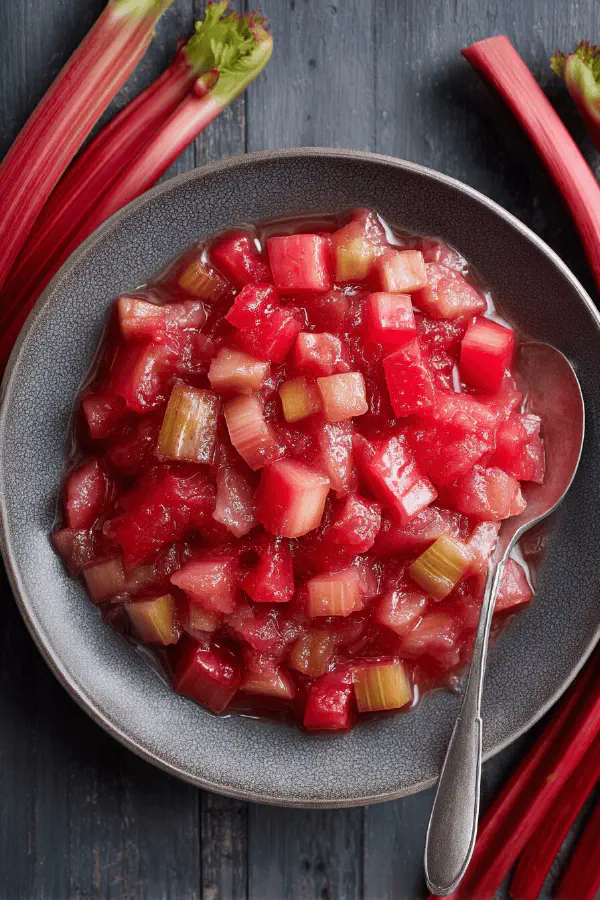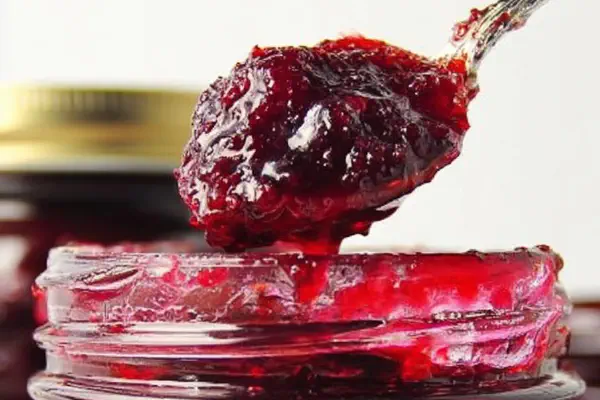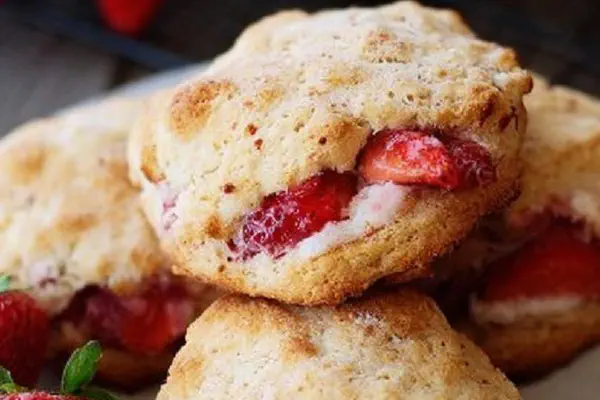Featured Recipe
Rhubarb Apple Jam Variation

By Kate
"
A tangy jam blending rhubarb and apples with a twist of ginger and vanilla. Uses less sugar and lemon zest instead of juice to brighten flavors. Cooked slowly until the fruit breaks down, thickened without pectin. Preserved by boiling jars for safety. Keeps a year sealed, shorter refrigerated. Ideal for rustic toast or dolloping on yogurt. Simple swaps for sugar and fruit make it adaptable.
"
Prep:
15 min
Cook:
23 min
Total:
38 min
Serves:
5 jars of 250 ml each
jam
canning
breakfast
preserves
Introduction
Jam making. Not just sugar and fruit. Timing crucial. Overcooked means dull taste; underdone, runny mess. Rhubarb’s sharp tang needs balancing with sweetness, apples bring texture, body. Vanilla and ginger lift the profile—no nasties, just layers. Lemon zest adds brightness, less harsh than juice but just enough punch. Sugar reduced from originals, knowing fruit’s natural acidity can hold firm. Cooking times vary by stove, pot thickness. Look for bubbling that slows, jam thickens; fruit falling apart but still with body. The auditory cues—soft crackle, steady boil—guide chef’s instincts. Then jar sterilizing—do not skip. Preservation critical. Keep jars submerged for deep sterilization, no shortcuts. Those lids must pop. If not, adjust boiling times or clean rims better next batch. Quality jam on toast or yogurt, gift that lasts through winter. Most kitchens have these fruits, if not try pears, quinces instead. Honey for sugar gives a tangy note, brown sugar adds depth. Jam your way but keep technique sharp.
Ingredients
About the ingredients
Rhubarb should be firm and brightly colored; avoid limp stalks. Cut pieces evenly to cook uniformly. Apples firm enough to hold shape but soften quickly work best—Royal Gala, but Granny Smith adds tartness. Sugar quantity adjustable—less sugar yields softer set, better refrigerated. Honey can replace sugar but reduces shelf life. Lemon zest preferred to juice; juice can overly acidify and make jam grainy. Fresh ginger adds warmth; powdered works but use less. Vanilla extract adds complexity, skip only if allergic. Substitutions possible but adjust cooking times—denser fruits take longer. Use stainless steel or heavy pots; thin pans cause burning. Stir often, scrape edges to prevent caramelization and bitterness. Avoid over stirring as it breaks down fruit too much, risking mushy texture. Jam must thicken enough to hold shape but remain spreadable. Timing flexible based on fruit ripeness and heat level.
Method
Technique Tips
Start with cold pot; mixing ingredients thoroughly before heating prevents sugar settling and protects from scorching. Stir often through heating to distribute heat evenly and prevent burning, especially at edges. Bring mixture to rolling boil—bubbling vigorous but not splashing out. Listen for subtle change in bubble sound—when jam bubbles slow and thicken, it’s nearing doneness. Apples should soften until semi-transparent; if still firm, extend simmer and stir well. Test thickness by dropping small spoonful on chilled plate; if it wrinkles when pushed, done. Adjust seasoning late-stage; acidity can dull with cooking so add more lemon zest or a bit of vinegar if needed. Pour hot into sterilized jars promptly to avoid skin forming. Fill jars leaving headspace; too full risks boil-over during sterilization. Boil jars at least 12 minutes with full cover of water. Remove carefully, allow jam to cool undisturbed for vacuum seal. If lids don’t pop, refrigeration recommended, consume quickly. Store away from light and heat. If jam too runny even after cooking, reboil with a bit of pectin or chia seeds for natural thickening. Too thick can be loosened with water or juice on reheating before use.
Chef's Notes
- 💡 Start with cold pot low heat. Avoid scorch. Mix rhubarb, apples, sugar for balance. Stir often; be alert to burning. Visual cues are key.
- 💡 Use fresh ingredients. Firm rhubarb bright color, apples should hold shape. Consistency matters. Granny Smith for tartness, Gala for sweetness.
- 💡 Watch for bubbling sounds. When slow, almost syrupy, nearing finish. Taste to adjust sweetness or tartness late stage. Once thickened, needs hot jars.
- 💡 Headspace matters when jar filling. Too full? Risk spillage during processing. Clean rims to ensure seals. Lids should pop. Cool undisturbed.
- 💡 Storage is crucial. Keep jars in dark cool place. After opening? Refrigerate within month or freeze for three. Be aware of shelf life.
Kitchen Wisdom
How do I prevent burning?
Stir often helps. Use heavy pan; it distributes heat. Just watch the edges. They caramelize quickly.
My jam is too runny?
Boil longer or add a bit pectin if needed. Sometimes more cooking time does the trick. Don’t get discouraged.
What's best for storage?
Keep jars sealed in dark spots. Refrigerate once opened. Use within month or freeze for later enjoyment.
What if my ingredients aren't fresh?
Use firm, less bruised fruits. Try mixing different ripe fruits like pears. Don't let them go to waste.



